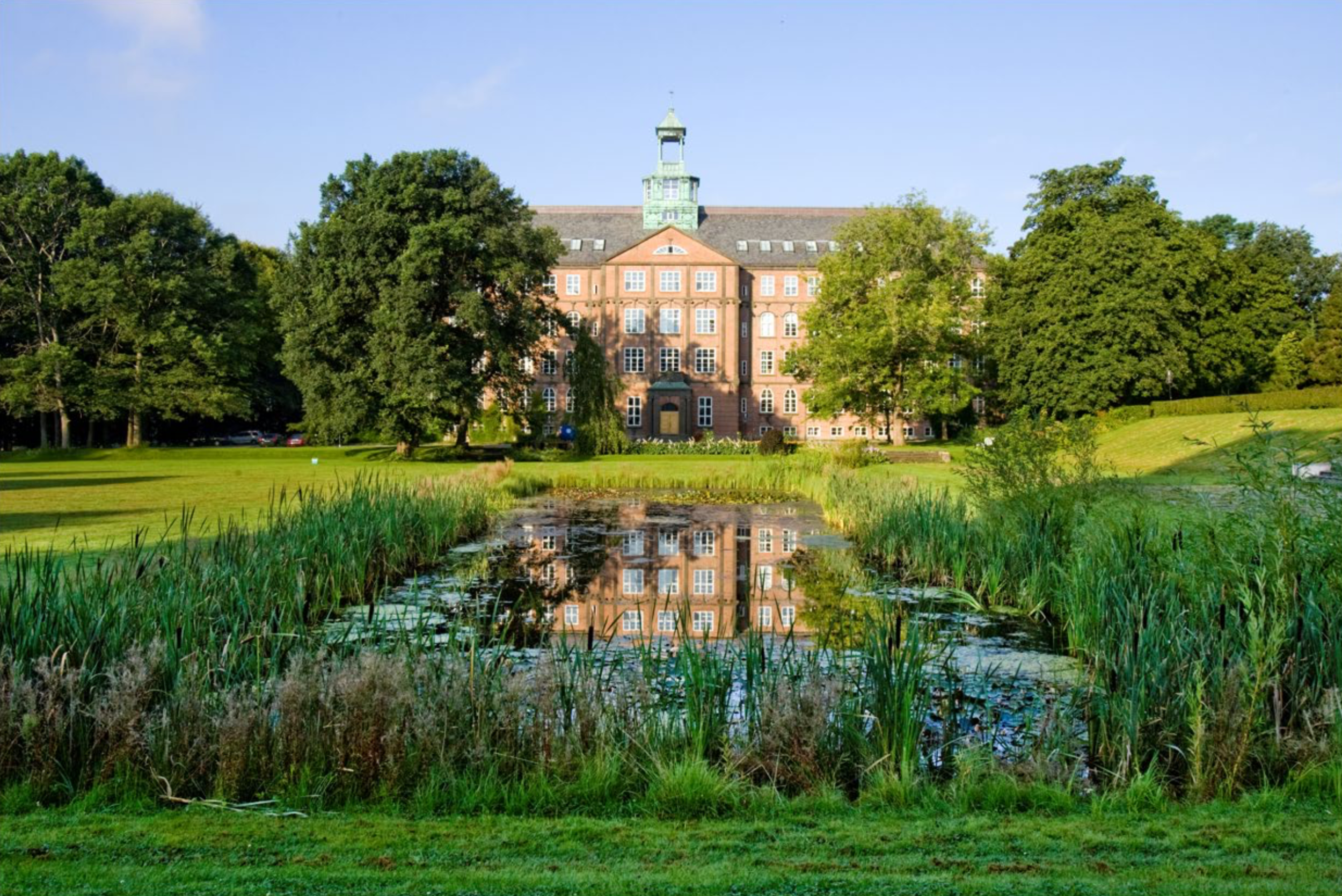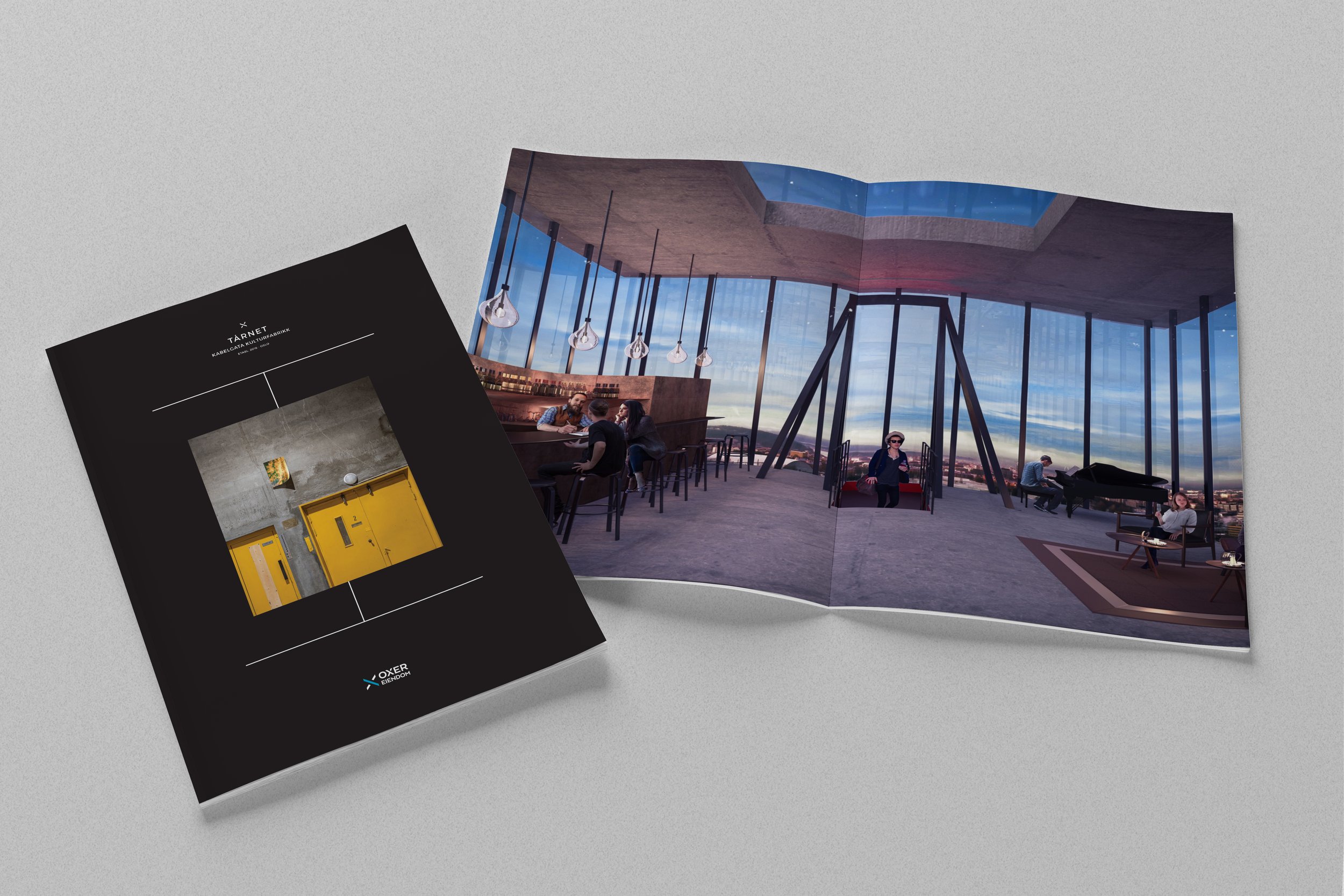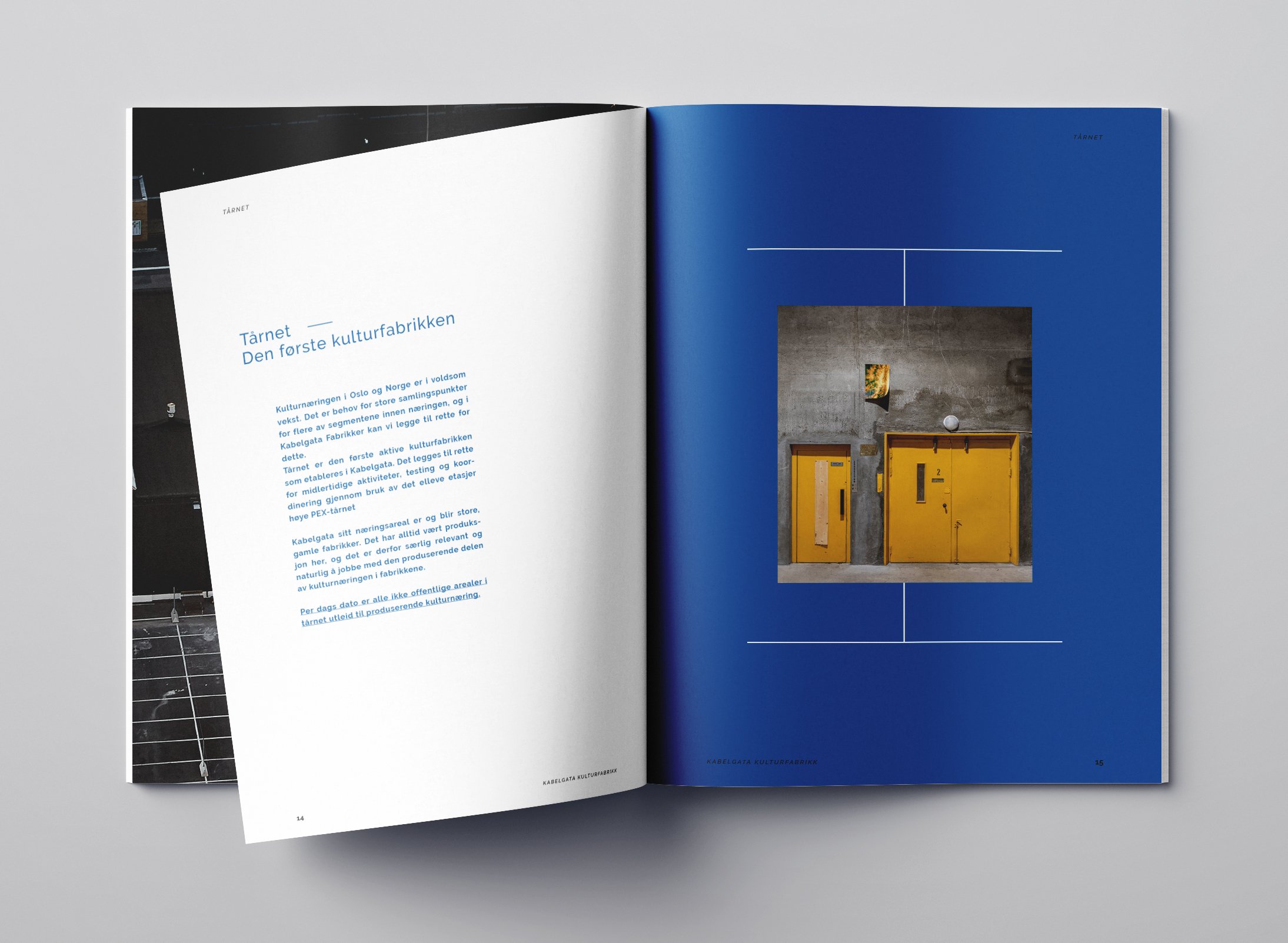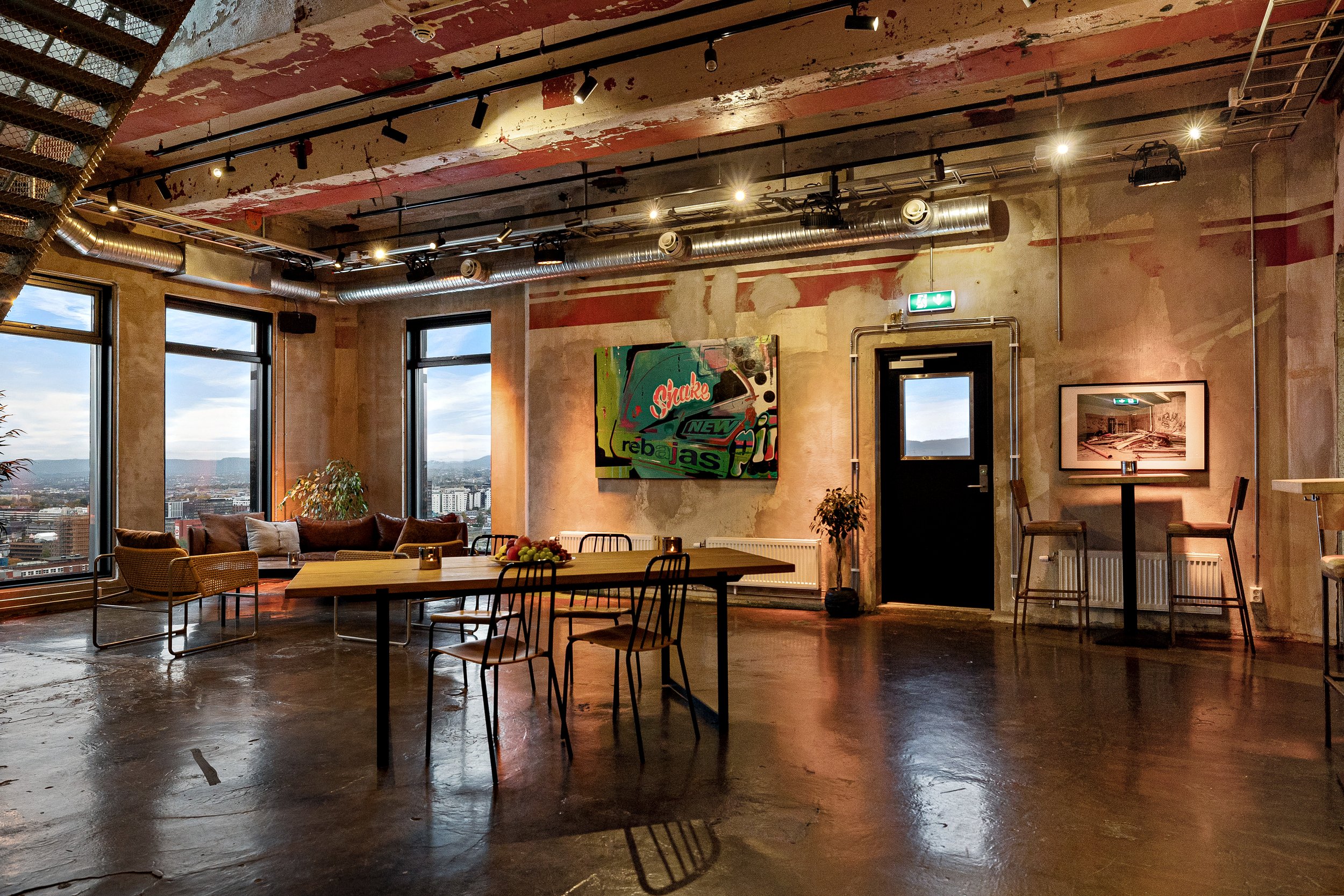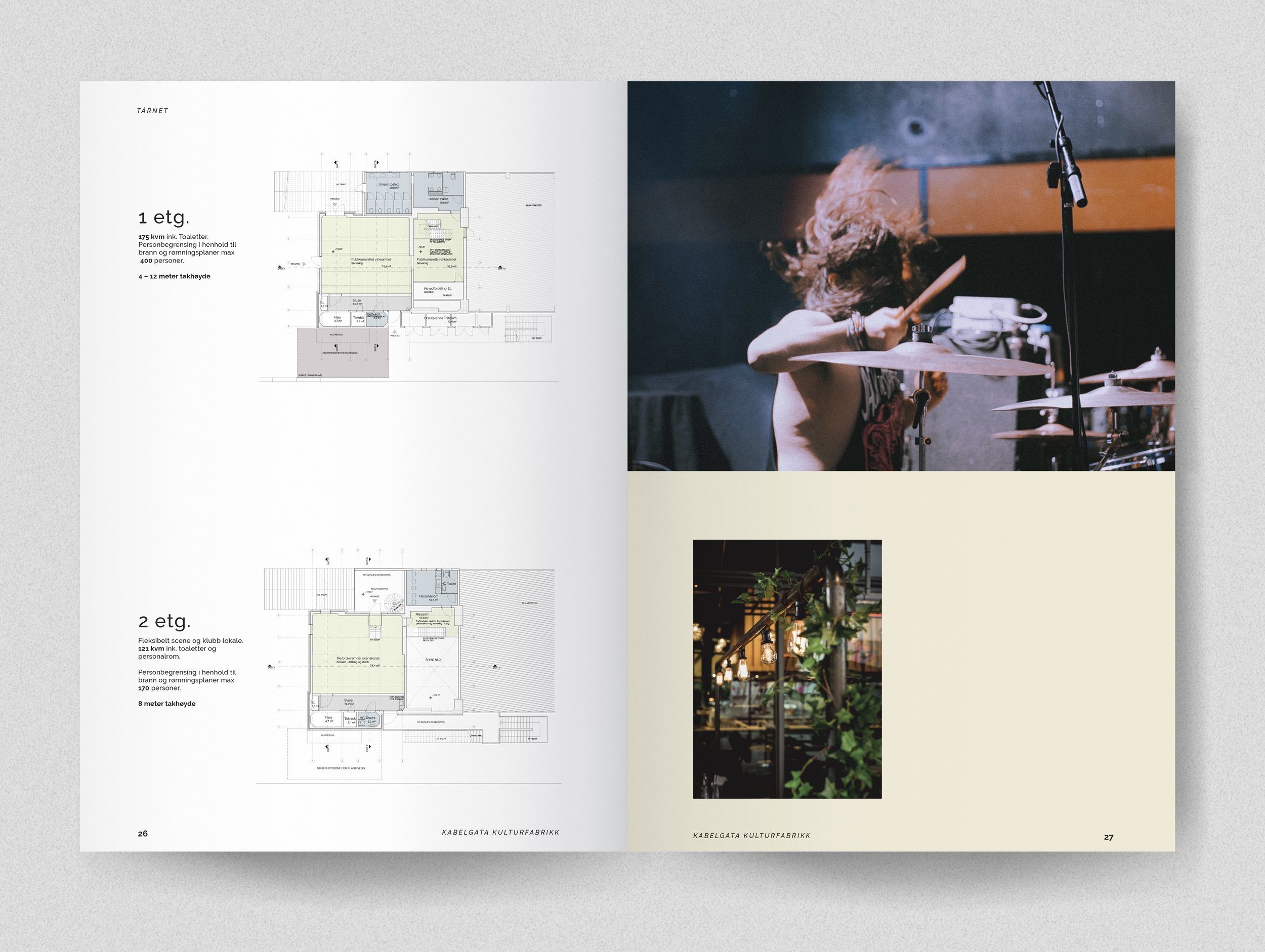Place economy maps out the value potential of place transformation projects
Tårnet Kulturarena
“The investment required for a well-built place development strategy and a clear place identity is a small fraction compared to the value a good place provides in the long term.”
Yet, throughout years of working with place development projects in Norway, we have grown accustomed to seeing missed opportunities in development projects of all sizes, including in some of the most well-known area transformations. Therefore, we want to take some time to explore why place economy, value and area optimisation are aspects each developer should consider early on in the development process — and what the benefits are in terms of an increased long-term value of the place, both financially in the market, for the people using the area, the local society and culture it affects and the nature and context the place is part of.
Natural State is a strategy agency specialising in place development and sustainable economics. We believe that a great place is active and attractive with the right functions for the location — it adds something to the local community, takes nature into account, has sustainable market value and reaches its economic potential. This means that early on in our projects, we define the key values of a location, including functions and activities. This allows us to outline the future income potential of the different areas and define the holistic economy of the place, i.e. the place economy.
To assess the place economy, we first look at natural value, human value, and societal value, before defining the market value and economic potential of the place. We then develop a strategic plan for achieving these values over time. Through this process, we can define the identity value of the place. Place identity is, in the end, how we understand and relate to the location and value of the unique place.
Photo by Klaudia Koldras-Flinik
“Place identity is, in the end, how we understand and relate to the location and value of the unique place.”
What is place economy?
Place economy is the calculation of a place’s total value and income potential when the project is fully developed. It indicates what the future real estate value and yield of the place can be. In addition to showing the potential for increased income per square meter — including fixed lease income, turnover-based rent, and increased square meter price for the building and nearby projects — it also reflects on the value the location can add to the local community. A good place can, for example, give a stronger sense of belonging, reduce loneliness, provide new meeting places, activate local business cooperation, reuse natural resources, increase brand awareness for nearby market players, strengthen the reputation of owners and tenants, increase income for nearby businesses, and much more. By mapping out these varying value opportunities, place economy shows the potential of places we see many developers missing out on.
Place economy for NMBU Campus Øst project with Oslo Works and Edit
Place economy is an essential part of the Natural State method for place development and delivery, as it is the final decision-making basis for a developer. It shows what the developer — and others — can gain from the development and what the returns for investing in the place are. The financial factors are very important to clarify in the early phase of a place transformation project, as we want to secure the correct qualities for the development process as it moves forward. If the financial factors, or at minimum the potential financial value, are not defined, we often see projects that result in processes where the qualities are reduced, as classic economic considerations do not indicate the total value potential of a place. In the end, the investment required for a well-built place identity is a small fraction compared to the value potential a good place provides in the future.
Through a place-based and market-oriented approach to sustainable place development, we can recognise the tremendous opportunities and value inherent in place transformations. By integrating these considerations into the strategic planning process, the place economy method and economic theory developed by Natural State (published as ‘The new natural state of the market’, in The Kyoto Post-COVID Manifesto For Global Economics: Confronting Our Shattered Society, Springer Nature, 2022) ensures that the development aligns with the principles of sustainability and delivers long-term benefits to both the stakeholders and the environment. In essence, the focus on place economy becomes a guiding principle, highlighting the untapped potential for positive social, environmental, and economic outcomes that can arise from conscientious and sustainable place development.
Area optimisation ensures developers realise the full value of their place
What is area optimisation? In short, it means the optimal use of the place around the clock, all year round. Area optimisation is one of the most important and perhaps easiest measures a developer can take to create a sustainable place, both environmentally and financially. A well-thought-out strategy for area optimisation is an important component of place economy.
In large projects, area optimisation is about the smart grouping of tenants, or other area users, who can share functions, infrastructure and natural resources. It is also about the multiple use of areas, for example, by creating common areas in office buildings that can work well as meeting places, conference rooms, event venues and community spaces.
NMBU Campus Øst project with Oslo Works and Edit
Good examples of area optimisation are often shared
Area optimisation is an opportunity to enrich your place development, show long-term planning and bring additional social and economic value. It is often done hand-in-hand with multifunction or shared spaces. ZZ Pizza + Mold Sider brewery, Fuglen Coffee Roasters + Fuglen coffee bar, Åpent Bakeri + Lofthus Samvirkelag, and Byens Tak which combines an architectural office with a bar and an event space, are all examples of two businesses flourishing in the same space and show how a place can be shared by several actors in a way that strengthens their functions.
Gamlebyen Loft
“By encouraging developers to consider area optimisation as a fundamental part of their planning process, Natural State aims to highlight the often untapped potential for creating thriving, interconnected communities within sustainable places. ”
There are many reasons why aware and future-looking developers pay attention to area optimisation. By combining two or more business models in the same space, businesses can share rental costs and risks, the developer can charge a higher price, and we ensure that fewer spaces are empty! Our cities are growing, so we need to get better at sharing the space we have. Here, Natural State has been inspired by the Japanese tradition of functional, compact and shared spaces.
Despite its potential benefits, area optimisation is often an overlooked aspect by developers. Instead, they may focus heavily on more familiar aspects, such as architectural aesthetics, infrastructure, or individual business strategies without fully harnessing the advantages of optimising the entire area. It is also common to see developers focusing on strategies for an individual building while neglecting to consider the context of the whole area, neighbourhood and local region. This oversight can lead to missed opportunities for synergies, shared resources, and increased overall efficiency and value.
In essence, area optimisation ensures that the full value of a place is realised, not just through individual business success but by fostering a collaborative environment that benefits all stakeholders. By encouraging developers to consider area optimisation as a fundamental part of their planning process, Natural State aims to highlight the often untapped potential for creating thriving, interconnected communities within sustainable places. Through a comprehensive approach that integrates place economy, sustainability, and area optimisation, we believe developers can unlock the true potential of their projects, contributing to a more vibrant, efficient, and socially connected urban landscape.
Combining place economy and area optimisation to create good places
These place development cases from the past few years highlight the value that can be gained from taking place economy into account in your development projects:
Sundland Verk, 2022–
Photo by Knut Neerland
When Sundland Jernbaneverksted was completed in 1911, it was one of Drammen's largest and most important workplaces. Today, parts of the area are still used as railway workshops, while most of the building stock is now in use as locations for storage, industry, culture and education. Bane NOR Eiendom has initiated an extensive development process for Sundland Verk. Over the next decades, the place will be transformed into an active and attractive neighbourhood in one of Europe's largest sustainable areas transformations — in line with the business strategy for Drammen municipality.
Sundland Verk is approximately 50,000 square meters and consists of 16 small and large buildings. Once the whole of Sundland is fully developed, the area will have approximately 800 housing units, many new workplaces, commercial activities and public services spread over 288,000 square metres. The beautiful buildings will be filled with content adapted to the place's unique history. Here you will find arenas and outdoor areas for sports, training and leisure activities, workshops and production premises, offices and retail spaces, food and drink venues, function rooms and much more.
Photo by Knut Neerland
Photo by Knut Neerland
The most important factor for realising this project is the place economy analysis. The transformation cost of this large-scale project is significant, and in order to make it an attractive investment, it was very important to develop a well-researched, trustworthy and clear economic potential for the value increase of both the Sundland Verk project itself, but also the identity value and increase of real estate value for the neighbouring residential development of Bane NOR Eiendom. After approximately a year of the process, there is an agreed understanding of the place economic potential of the project, based on a development strategy. This project will continue for many years to come, however, we can already see the interest the local community has in it and the outlook for value development over the coming period.
Photo by Knut Neerland
NMBU Campus Øst, 2022
NMBU Campus Øst project with Oslo Works and Edit
The aim of Campus Øst at NMBU Ås is to create one of the world’s most sustainable and attractive campuses. At the heart of this transformation is interconnectivity between Campus Øst and the university, the city of Ås and the local community. The new area will facilitate interdisciplinary collaboration, knowledge sharing, and innovation, as well as create a rich student and business life in the heart of Ås.
Together with Oslo Works and Edit, Natural State made a feasibility study for NMBU, suggesting a holistic development process for the area, with a focus on place identity, area optimisation, as well as sustainable building transformation. The suggested programming and functions are market-oriented and based on NMBU's unique competence in innovation, research, agriculture and sustainability. Here you will find indoor and outdoor meeting places, active squares for trade, service and events, different marketplaces, restaurants and cafes, as well as an exhibition venue. You can rent small or large offices with modern facilities and go to sustainability events at the rooftop conference venue, which is also available to the public. All spaces are constructed and programmed for a high level of flexibility and multifunction, giving the opportunity to optimise the area with different concepts for different seasons or hours of the day. This way, Campus Øst will generate maximum value all day, all year — securing a robust and sustainable place economy for NMBU and Ås.
NMBU Campus Øst project with Oslo Works and Edit
Tårnet Kulturarena (Kabelgate 51), 2016–2019
Kabelgate is a natural focal point of Økern, Oslo. Natural State developed a comprehensive place development and identity strategy for Kabelgata Kulturfabrikker and Tårner Kulturarena. The project was initiated under the “Reinventing The Fringe” project through which Oslo municipality sought collaboration with local real estate developers in Hovinbyen, the biggest industrial transformation area of the city. The Kabelgate location was the only one with old protected brick-built cable factories in the area. In addition, it included the landmark empty cable tower. The PEX tower was built in 1962 and was for most of its life an active part of the area's industrial landscape. OXER Eiendom took over the building in 2014 and over the following few years transformed it into Tårnet Kulturarena — a versatile space which facilitates an array of cultural activities from exhibitions and shows to events and parties. The modernised space is equally rough, industrial and urban, and simultaneously intimate, airy and elegant.
The economic incentive for refurbishing and activating the old tower, and also doing an overall rotation strategy for the old factory area, was hard to bring to fruition. Building activity and attractivity in the area was clearly of interest to all parties. However, the cost of nearly 60,000,000 NOK in investments for a medium-term (20 years) temporary project was seen as a too big risk to commit to. This is why the place economic model of identity value and its effect on the income areas of the project were developed. We identified the full potential of the build, including close to 1500 apartments, and indicated a 15% increase in value regardless of whether the strategic project was conducted or not. In addition, we calculated the activity and turnover prognoses of the company that facilitated all the events. We could then indicate that this could be a 0-sum investment over 20 years on the business, in addition to this would come the 15% increase of the property value on all built residential square meters.
Tårnet Kulturarena has proven itself as a great case for place development since opening in 2019. It has been turning over 20,000,000 NOK per year with an 11% turnover rent on the privatised areas. All identity areas are fully rented out to the strategically right activities on market terms and the recognition that Kabelgate has in the city of Oslo has gone from an unknown to a recognised destination. Today, the project is fully active and operational.
Good places bring value, in all ways. If you would like to know more about Natural State’s value-based place development, get in touch with us by emailing contact@naturalstate.no











